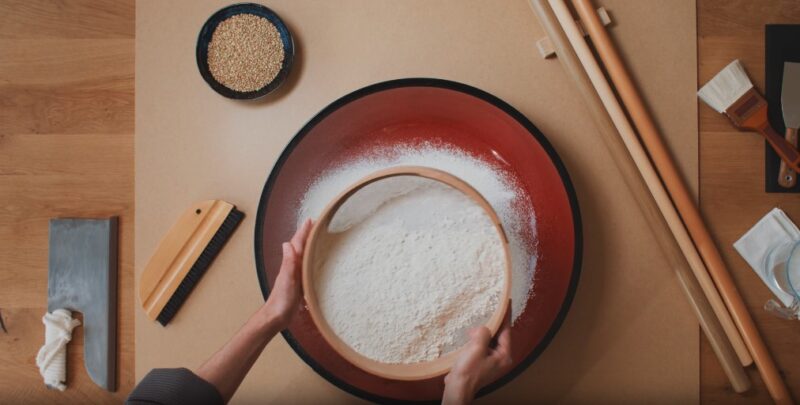Glutinous rice flour, traditionally used in East and Southeast Asian cuisines is made from short-grain or sweet rice and is known for its sticky and chewy texture. It is a versatile ingredient, used in both savory and sweet recipes, and is gluten-free.
Below are seven creative ways to incorporate this flour into your cooking, unleashing culinary potentials you might not know existed!
1. Sweet Dumplings (Tangyuan)
Sweet Dumplings or Tangyuan are a delightful Chinese dessert, often enjoyed during the Lantern Festival. Glutinous rice flour is the star ingredient, creating the chewy and soft texture of the dumplings.
Making the Dumplings
Sweet dumplings are straightforward to make. Start by mixing the glutinous rice flour with water to form a dough, then mold it into small balls. The balls can be filled with various sweet fillings like sesame paste, peanut butter, or sweetened red bean paste.
- Tip: Knead the dough well until it’s smooth and pliable to ensure a nice texture.
Cooking the Dumplings
Once shaped, the dumplings are cooked by boiling until they float to the surface, indicating that they are done. They are typically served in a sweet ginger syrup, the warmth and spiciness of the ginger contrasting beautifully with the sweet, soft dumplings.
- Tip: Don’t overcook the dumplings, as they can become too soft and lose their shape.
2. Mochi
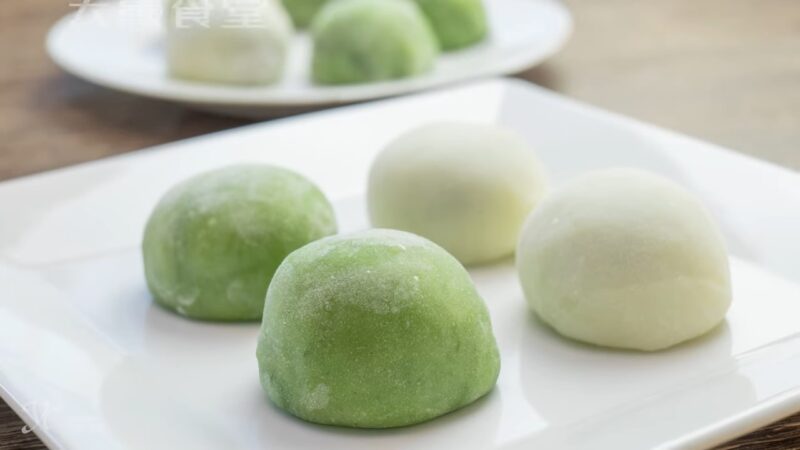
Mochi, a Japanese delicacy, uses glutinous rice flour to achieve its signature chewy texture. It can be enjoyed in various forms, such as ice cream wraps or sweet-filled treats, making it a versatile and delightful dessert.
Preparing Mochi
Making mochi involves combining glutinous rice flour with water and sugar. The mixture is then steamed or microwaved until it forms a sticky, elastic dough. It’s crucial to watch the dough carefully during cooking to avoid overcooking and achieving the desired texture.
- Tip: Use cornstarch or potato starch to prevent the dough from sticking to your hands or work surface when shaping it.
Did you know that you can make mouth-watering dishes with potatoes?
Filling and Serving Mochi
Mochi can be filled with sweetened red bean paste, ice cream, or other sweet fillings. Once filled, the mochi is dusted with cornstarch to prevent sticking. Mochi is best enjoyed fresh, but it can also be stored in an airtight container for a few days.
- Suggestion: Experiment with different fillings, like chopped fruits or sweetened nut pastes, to create unique flavors and textures.
3. Glutinous Rice Flour Pancakes
Elevate your breakfast game by making pancakes with glutinous rice flour. These pancakes are delightfully fluffy and have a slightly chewy texture, offering a unique twist to the traditional ones.
Creating the Batter
Mixing glutinous rice flour with regular pancake ingredients creates a batter that is a bit thicker. You may need to adjust the liquid content to get the desired consistency. Adding a bit of baking powder will give the pancakes a nice lift, making them fluffy and light.
- Tip: Let the batter rest for a few minutes before cooking to allow the flour to fully absorb the liquid.
Cooking the Pancakes
Cook the pancakes on a griddle or a non-stick pan over medium heat. The pancakes will be ready to flip when the edges begin to look set, and bubbles form on the surface. Serve them hot with your favorite toppings like fresh fruits, syrup, or whipped cream.
- Tip: Keep the cooked pancakes in a warm oven until you’re ready to serve them to ensure they stay fluffy and warm.
4. Savory Dumplings
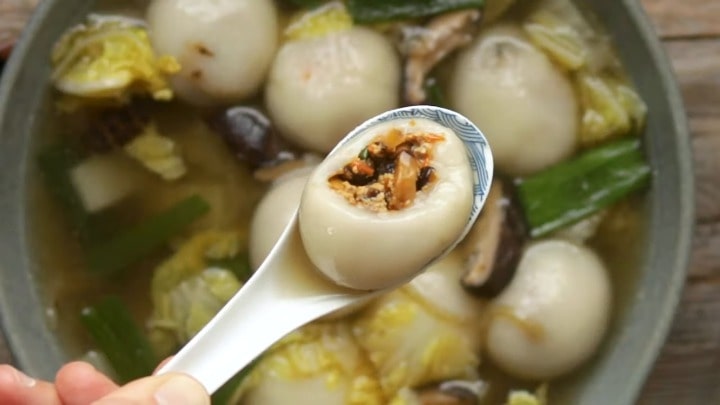
Glutinous rice flour is not just for sweet treats; it’s also perfect for making savory dumplings, offering a delectable and hearty dish that can be enjoyed as a main or a side.
Making Savory Dumplings
To make savory dumplings, mix glutinous rice flour with water to form a dough. You can then fill the dough with a variety of savory fillings such as minced meat, chopped vegetables, or a combination of both.
- Suggestion: Season the filling well, and don’t overstuff the dumplings to ensure they cook evenly.
Cooking Savory Dumplings
The dumplings can be steamed, boiled, or pan-fried, depending on your preference. Once cooked, they can be served with a dipping sauce or incorporated into soups or stews for a hearty meal.
- Tip: If boiling the dumplings, ensure the water is at a rolling boil before adding them to avoid them sticking together.
5. Thickening Agent
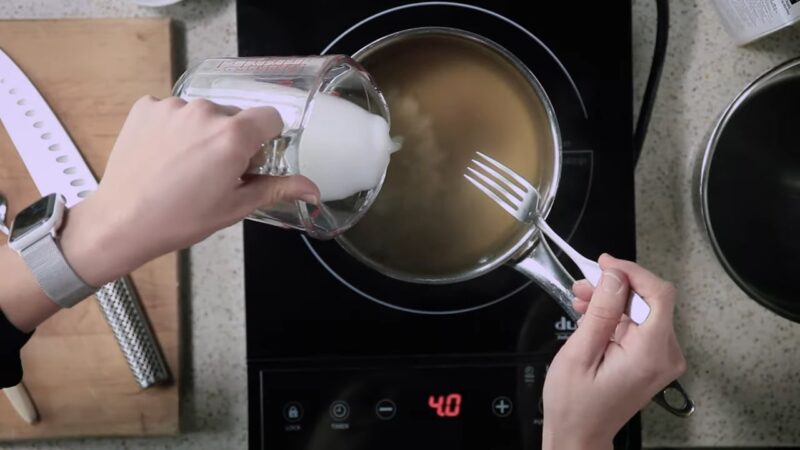
Glutinous rice flour also serves as an excellent thickening agent for sauces, gravies, and soups, providing a smooth and glossy finish without altering the flavor.
Using as a Thickener
To use glutinous rice flour as a thickener, mix it with a little cold water to form a slurry before adding it to your hot liquid. Stir continuously to avoid lumps and achieve a smooth texture.
- Tip: Start with a small amount and gradually add more if needed to reach the desired consistency.
Benefits of Using Glutinous Rice Flour as a Thickener
One significant advantage of using glutinous rice flour as a thickener is that it is gluten-free, making it suitable for those with gluten intolerances. It also provides a transparent and glossy finish, making it ideal for Chinese sweet soups and sauces.
- Reminder: As it’s flavorless, it won’t impact the taste of your dishes.
6. Gluten-Free Baking
Glutinous rice flour is a boon for gluten-free bakers, offering an alternative to wheat flour. It provides baked goods with a moist, dense texture, making it ideal for certain cakes, cookies, and bread.
Baking with Glutinous Rice Flour
When using glutinous rice flour in baking, it’s essential to consider that it will produce denser and moister baked goods than wheat flour. It works best in recipes that benefit from its chewy texture, like brownies or chewy cookies.
- Suggestion: Combine it with other gluten-free flour like almond flour or coconut flour to achieve different textures and flavors.
Benefits of Gluten-Free Baking with Glutinous Rice Flour
Glutinous rice flour not only caters to those with gluten intolerances but also offers a unique texture and flavor to baked goods. It’s especially great for creating moist and chewy treats that are sure to be a hit even with those who can consume gluten.
- Tip: Experiment with different ratios of flour and ingredients to find the perfect recipe that suits your taste and dietary needs.
7. Noodles
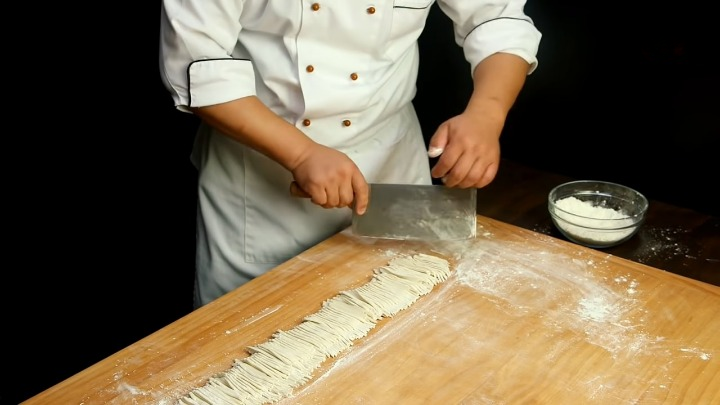
Handmade noodles using glutinous rice flour are soft, chewy, and versatile. They can be used in a variety of dishes, from stir-fries to soups, providing a delightful eating experience.
Making Glutinous Rice Flour Noodles
To make noodles, combine glutinous rice flour with water to form a dough. Roll the dough into thin sheets and cut into your desired shape. These noodles are best cooked fresh but can also be dried for later use.
- Tip: Keep the dough covered with a damp cloth while working to prevent it from drying out.
Cooking and Serving the Noodles
Glutinous rice flour noodles can be boiled and added to soups or stir-fried with vegetables, meats, and sauces. They are incredibly versatile, soaking up the flavors of the dish and providing a satisfying chewy texture.
- Tip: Be cautious not to overcook the noodles, as they can become too soft and lose their chewy texture.
FAQs
Is glutinous rice flour the same as regular rice flour?
No, it is not the same as a regular one. While both are gluten-free, glutinous rice flour is made from sweet or sticky rice and has a higher starch content, which gives it a sticky and chewy texture when cooked.
Regular variation is made from long or short-grain rice and does not have the same sticky consistency.
Is glutinous rice flour healthy?
Yes, it can be considered a healthy food option. It is gluten-free and can be a great alternative for people with gluten intolerances or celiac disease. It is low in fat and can be a good source of carbohydrates and energy.
However, it is low in fiber and high in calories, so it should be consumed in moderation, especially by those monitoring their calorie or carbohydrate intake.
Can I use glutinous rice flour for frying?
Yes, you can use it for frying. It can act as a batter or breading for fried foods, giving them a crispy exterior. When using it for frying, you may need to mix it with other ingredients, like eggs or water, to achieve the right consistency for coating.
How should I store glutinous rice flour?
It should be stored in a cool, dry place, away from heat and moisture, in an airtight container. It has a longer shelf life compared to regular flour. For extended shelf life, you can also store it in the refrigerator or freezer, ensuring it is sealed properly to prevent moisture from entering.
Can I substitute regular flour with glutinous rice flour in recipes?
While you can substitute it for regular flour in some recipes, it’s important to note that they have different properties. Glutinous rice flour will give a chewy and sticky texture, and it lacks gluten, which provides structure in baked goods made with wheat flour.
Therefore, when substituting, the texture and structure of your dish may be significantly different, and additional adjustments, like adding a binding agent, may be needed.
Is glutinous rice flour suitable for people with diabetes?
People with diabetes should consume it in moderation as it is high in carbohydrates and has a high glycemic index, which means it can cause a rapid increase in blood glucose levels.
It’s essential for individuals with diabetes to manage their carb intake and monitor blood sugar levels regularly when consuming foods high in carbohydrates like those made with glutinous rice flour.
Final Words
Glutinous rice flour is a versatile ingredient, opening up a myriad of culinary possibilities, from delightful desserts to savory mains, and even as a handy helper in achieving the right consistency in sauces and soups.
Its unique texture and ability to cater to gluten-free needs make it a must-have item in every kitchen. So, experiment away and discover the various delicious ways you can incorporate glutinous rice flour into your culinary creations!

